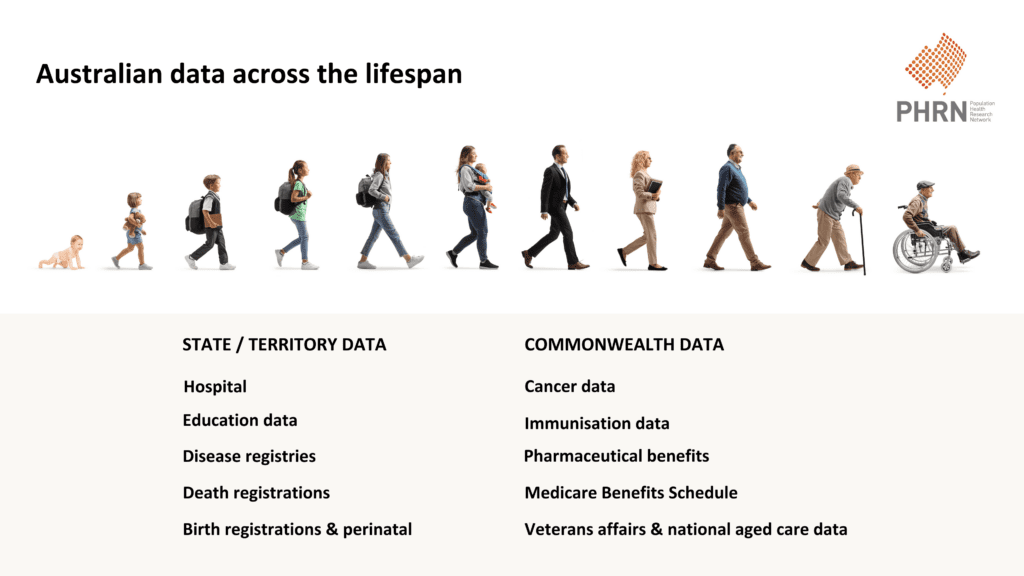Data linkage
Who’s involved?
Three groups are involved in data linkage and access processes:
How is data linked?
Access to and use of linked datasets is a complex and strictly controlled process. Researchers undergo a stringent application process requiring approval from each data custodian plus at least one Human Research Ethics Committee to confirm their study is both valid and in the public interest.
Once a project is approved, the data custodians and staff at the Data Linkage Unit work together to determine which records are required for the study to ensure minimal information is provided to the researcher. Data linkers then prepare linkage keys (a random string of numbers and letters) for the project enabling the provision of a merged dataset to the researcher to analyse. See infographic for a simple overview.
A similar approach is used if a researcher wants to link research data (e.g. from a clinical trial, registry, or longitudinal study) to the linked data.
What are the benefits of data linkage?
What can linked data be used for?
Many of our life experiences from the moment we are born until our death generate data that is collected and used for a range of purposes. For example, information is routinely collected when you go to school, visit a hospital, when you get married or divorced and when you have a baby. This data is collected by different organisations all over Australia.

Researchers, health professionals, government policy-makers and planners link this data to:
For examples of research conducted using linked data click here.
For more assistance on your data linkage journey, please contact Client Services of your jurisdictional Data Linkage Unit or the PHRN National Office.